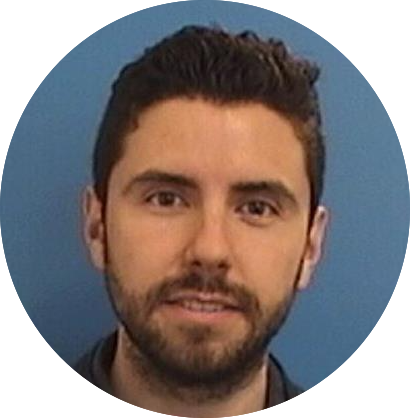Ciprian Catana, MD, PHD Director of Integrated PET/MR Imaging Athinoula…
Eduardo Coello, PhD and Alex Lin, PhD: Ultra-High Field MR Spectroscopy: Breaking the Spatio-Temporal Limits


Abstract
Magnetic resonance spectroscopy (MRS) and spectroscopic imaging (MRSI) at ultra-high field (≥7T) benefit from improved signal-to-noise ratio (SNR) and spectral dispersion. This enables potential clinical applications that involve the reliable measurement of low-concentration metabolites with high sensitivity, spatial and temporal resolution.
MRSI at ultra-high field allows the measurement of brain metabolites with higher spatial resolution. However, optimized techniques are required to overcome the technical challenges and the inherent limitations of MRSI acquisitions at high fields strengths. Likewise, dynamic measurements of metabolite concentrations with a higher temporal resolution are possible at 7T. Functional MRS (fMRS) experiments benefit from the improved temporal resolution and SNR, allowing the study brain function under specific tasks. In this talk, recent developments of high-resolution MRSI of the brain and the implementation of functional MRS methods to study visual and auditory brain function will be presented.
Short Bio
Eduardo Coello is a Postdoctoral Fellow in the Center of Clinical Spectroscopy at Brigham and Women’s Hospital. His expertise is primarily in acquisition and reconstruction methods for medical imaging technologies, such as magnetic resonance spectroscopy (MRS), spectroscopic imaging (MRSI), X-ray imaging, and ultrasound. He studied Biomedical Engineering (B.Sc.) and Biomedical Computing (M.Sc.) before completing his doctoral training in the field of Medical Physics at the Technical University of Munich (TUM). From 2013 to 2018 he worked at the GE Global Research Center in Munich, Germany, in the development of new techniques for X-ray phase contrast imaging and accelerated MRSI. In 2017, he was a visiting researcher in the department of Radiology and Biomedical Imaging at the University of California, San Francisco (UCSF) where he worked on the optimization high-resolution MRSI acquisition sequences at 7T. His current research focuses on the development of new MRS and MRSI methodologies for clinical applications at 3T and 7T.